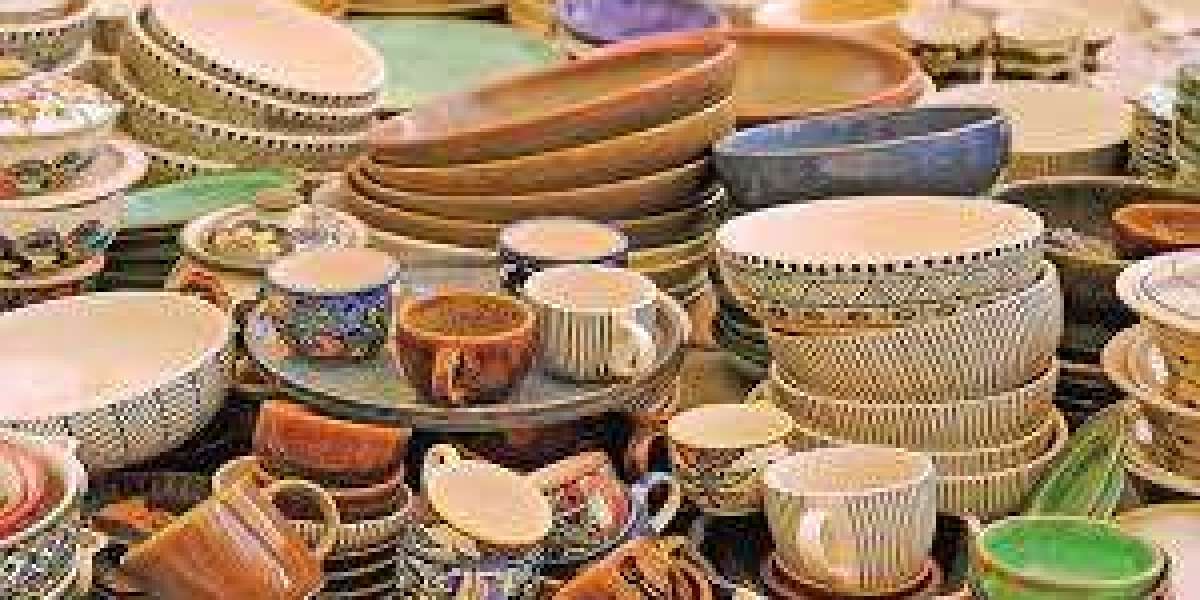ceramics, one of humanity's oldest and most enduring materials, have played a vital role in shaping civilizations, advancing technology, and inspiring artistic expression. From ancient pottery to cutting-edge industrial applications, ceramics have evolved into a versatile and indispensable medium. This article explores the rich history, diverse types, production processes, modern applications, and future trends of ceramics, offering a comprehensive look at this fascinating field.
The History of Ceramics: From Ancient Artifacts to Modern Marvels
The story of ceramics begins thousands of years ago, with the earliest known examples dating back to around 24,000 BCE. These early ceramics, often in the form of figurines and simple vessels, were made from clay and fired at low temperatures. The invention of the potter's wheel around 3500 BCE marked a significant leap forward, enabling the creation of more uniform and intricate designs.
Throughout history, ceramics have been a reflection of cultural and technological progress. In ancient China, the development of porcelain during the Tang Dynasty (618–907 CE) represented a major achievement, combining beauty and functionality. Islamic ceramics during the medieval period were renowned for their intricate geometric patterns and vibrant glazes, while European ceramics during the Renaissance emphasized artistic expression and craftsmanship.
The Industrial Revolution brought about mass production techniques, making ceramics more accessible to the general public. Today, ceramics are not only valued for their aesthetic appeal but also for their scientific and industrial applications, from aerospace engineering to medical technology.
Types of Ceramics: Traditional, Industrial, and Advanced
Ceramics can be broadly categorized into three main types, each with its own unique properties and applications:
Traditional Ceramics: These are the ceramics most people are familiar with, including pottery, tiles, bricks, and tableware. Made from natural materials like clay, silica, and feldspar, traditional ceramics are known for their durability and aesthetic qualities. Examples include:
Earthenware: Porous and often glazed, used for pottery and decorative items.
Stoneware: Denser and more durable, commonly used for tableware and cookware.
Porcelain: Highly refined and translucent, prized for its beauty and strength.
Industrial Ceramics: These ceramics are engineered for specific industrial applications. They are made from refined raw materials and exhibit enhanced properties such as thermal resistance, electrical insulation, and chemical stability. Examples include:
Refractory ceramics: Used in furnaces and kilns due to their ability to withstand extreme temperatures.
Electrical insulators: Essential for power transmission and electronic devices.
Advanced Ceramics: Also known as technical or engineered ceramics, these materials are designed for high-performance applications. They are characterized by their exceptional strength, hardness, and resistance to extreme conditions. Examples include:
Silicon Carbide: Used in aerospace and automotive industries for its lightweight and heat-resistant properties.
Zirconia: Known for its toughness and biocompatibility, used in medical implants and cutting tools.
Alumina: Widely used in electronics and industrial machinery for its electrical insulation and wear resistance.
The Ceramic Production Process: From Clay to Masterpiece
The production of ceramics involves several stages, each requiring precision and expertise. While the process can vary depending on the type of ceramic being produced, the general steps are as follows:
Raw Material Preparation: The first step involves selecting and preparing the raw materials. For traditional ceramics, this typically includes clay, silica, and feldspar. These materials are crushed, purified, and mixed to achieve the desired composition.
Shaping: The prepared material is then shaped into the desired form. This can be done using various techniques, such as:
Hand molding: Shaping clay by hand, often used for artistic pieces.
Wheel throwing: Using a potter's wheel to create symmetrical shapes like bowls and vases.
Slip casting: Pouring liquid clay (slip) into a mold to create intricate shapes.
Extrusion: Forcing clay through a die to create uniform shapes like tiles or pipes.
Drying: The shaped ceramic is dried to remove excess moisture. This step is crucial to prevent cracking or warping during the firing process.
Firing: The dried ceramic is fired in a kiln at high temperatures, typically ranging from 600°C to 1600°C, depending on the type of ceramic. Firing transforms the raw materials into a hard, durable product through a process called sintering.
Glazing and Decoration: After firing, the ceramic may be glazed to enhance its appearance and functionality. Glazes are made from glass-forming materials and are applied as a liquid before a second firing. Decorative techniques such as painting, engraving, or stamping can also be used to add artistic elements.
Finishing: The final step involves inspecting, polishing, and packaging the ceramic product. Quality control is essential to ensure that the finished product meets the required standards.
Applications of Ceramics: From Everyday Life to High-Tech Industries
Ceramics have a wide range of applications across various industries, thanks to their unique properties. Some of the most notable uses include:
Construction: Ceramics are widely used in the construction industry for materials like bricks, tiles, and sanitaryware. Their durability, thermal insulation, and resistance to weathering make them ideal for building applications.
Electronics: Advanced ceramics are essential in the electronics industry, where they are used to manufacture components like capacitors, insulators, and semiconductors. Their electrical insulation and thermal conductivity properties are particularly valuable.
Medical: Bioceramics, such as hydroxyapatite and zirconia, are used in medical implants and prosthetics due to their biocompatibility and strength. They are also used in dental restorations and surgical instruments.
Aerospace: The aerospace industry relies on advanced ceramics for components that must withstand extreme temperatures and stresses. Examples include turbine blades, heat shields, and rocket nozzles.
Art and Design: Ceramics continue to be a popular medium for artists and designers. From sculptural pieces to functional tableware, ceramics offer endless possibilities for creative expression.
Energy: Ceramics play a crucial role in energy production and storage. They are used in fuel cells, batteries, and solar panels, where their thermal and electrical properties are highly beneficial.
Future Trends in Ceramics: Innovation and Sustainability
As technology continues to advance, the field of ceramics is poised for exciting developments. Some of the key trends shaping the future of ceramics include:
Nanoceramics: The use of nanotechnology in ceramics is opening up new possibilities for materials with enhanced properties. Nanoceramics exhibit improved strength, flexibility, and thermal resistance, making them suitable for cutting-edge applications.
Sustainable Ceramics: With growing environmental concerns, there is a push towards developing sustainable ceramic materials and production methods. This includes using recycled materials, reducing energy consumption, and minimizing waste.
3D Printing: Additive manufacturing, or 3D printing, is revolutionizing the way ceramics are produced. This technology allows for the creation of complex shapes and structures that were previously impossible to achieve with traditional methods.
Smart Ceramics: Researchers are exploring the development of smart ceramics that can respond to external stimuli such as temperature, pressure, or electric fields. These materials have potential applications in sensors, actuators, and adaptive structures.
Biomimetic Ceramics: Inspired by nature, biomimetic ceramics are designed to mimic the structure and properties of biological materials. This approach is leading to the creation of ceramics with unique combinations of strength, flexibility, and functionality.
Conclusion: The Enduring Legacy of Ceramics
Ceramics are a testament to human ingenuity and creativity. From their humble beginnings as simple clay vessels to their current role as advanced engineering materials, ceramics have continually adapted to meet the needs of society. As we look to the future, the potential for innovation in ceramics is limitless, promising new materials and applications that will shape the world in ways we can only imagine. Whether in art, industry, or technology, ceramics will undoubtedly remain a vital and dynamic field for generations to come.
This 1500-word article provides a comprehensive overview of ceramics, covering their history, types, production processes, applications, and future trends. If you'd like to dive deeper into any specific aspect, feel free to ask!








